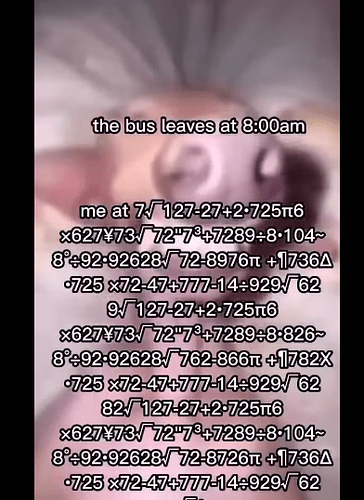Don’t we all here :)
Do you guys ever have anything similar
Oftentimes throughout the day I feel like I’m being hit with energy
Feels just like being slammed by a massive ocean wave
Except it’s energy
yes it iz
What
What are you replying to
Lol
to diz
Why do you think is that happening?
I don’t know much about it
but it does happen
better to maintain a good energetic system to withstand all those things fo sho
I want to eat
Didn’t know PUBG used sect-building techniques as marketing deym
phone bigger than my laptop
tru dat
hlo hw r u
normal size, how are you?
Oh today you are not smol
Nice
Tomorrow me going to gym, feeling strongo
Today I stretched my back…it sucks cause it hurts but then I feel better than usual…as long as I’m sitting xD
But now it contracted to non-stretched size so I’m feeling compressed again…well at least today I noticed my lower back is like setting the whole quality of my life xD
anyways i came just to spam so here we go
these 2 gentlemen are otherwise decently smart, but this is what happens when you spend half the day high
https://www.youtube.com/watch?v=1GrK9FJK_Ek&pp=ygUZbHVwaW4gYW12IGNvbGQgYW5kIGJsb29keQ%3D%3D
does anyone know what the pp handler is about? it’s making youtube links way too long and making it hell to work with it
Guat is dat?
Es an ultra
Hlo
Racist
Non inclusive towards the E letter.
Also using 1 l and not 2 as intended let’s the word know you don’t care that much for the letter L Either.
hola
I am not Mexican

